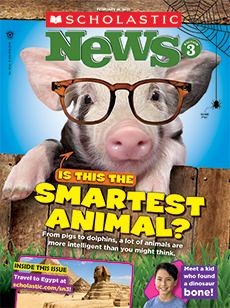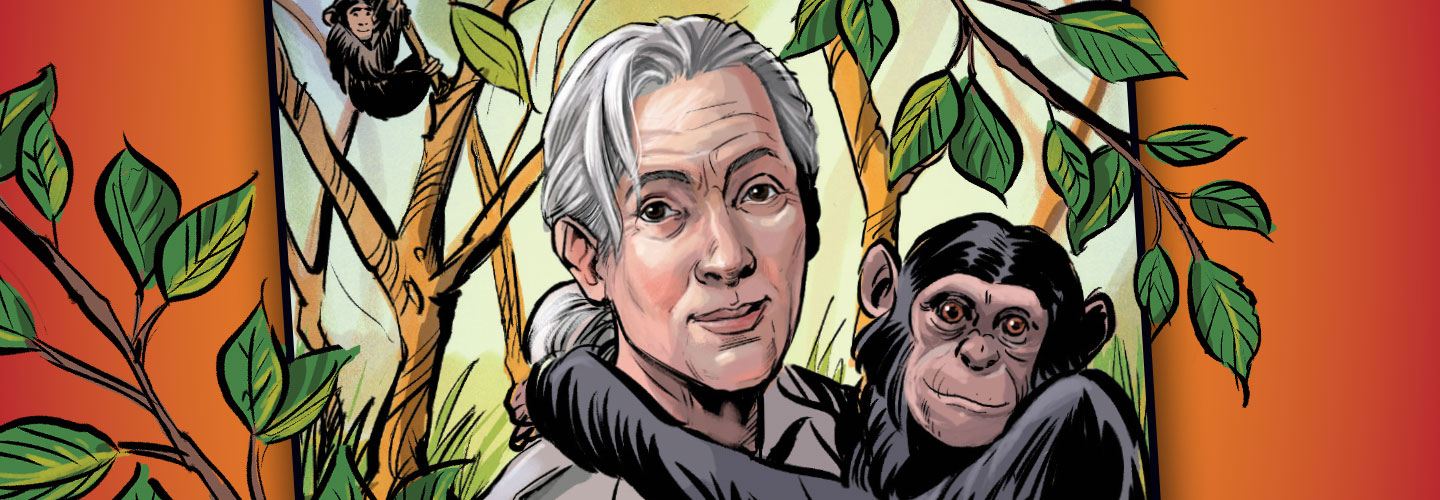In 1938, Jane Goodall was 4 years old and lived in England. One day her family couldn’t find her for a few hours—she was missing!
They finally found her hiding in a henhouse. She said that she had wanted to watch chickens lay eggs.
It wouldn’t be the last time Goodall showed a love for watching animals! In fact, she later became the first scientist to observe chimpanzees in the wild.

